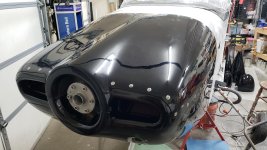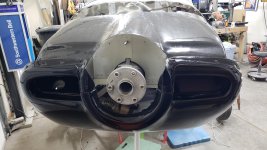cjohngraham
Member
My RV-7A was painted 6 months ago by a very reputable shop. Lately the upper and lower cowl have erupted in blisters in multiple locations. The paint shop thinks an O-360 should not produce enough heat to create blisters, and they say this condition is very rare. Fortunately they will fix the problem--this time--under warranty, but I'd really like to know what's happening so it doesn't again.
Has anyone experienced this, and what was the cause? The paint shop (Master Aircraft Services) mentioned heat and fiberglass contamination, e.g. oil, as possibilities. The plane had been flying for 5 years before being painted and the cowls had spray-can grey primer on them. I'm assuming the shop took that primer off because they use a special $1200/gallon primer for fiberglass.
Another RVer asked if we had painted the inside of the cowl (we had not) because fiberglass can have pinholes that can let hot air through.
CHTs can run up to 420 (OK per Mike Busch) in climb, mid-upper 300s in cruise.
Anyone else had this problem?
Has anyone experienced this, and what was the cause? The paint shop (Master Aircraft Services) mentioned heat and fiberglass contamination, e.g. oil, as possibilities. The plane had been flying for 5 years before being painted and the cowls had spray-can grey primer on them. I'm assuming the shop took that primer off because they use a special $1200/gallon primer for fiberglass.
Another RVer asked if we had painted the inside of the cowl (we had not) because fiberglass can have pinholes that can let hot air through.
CHTs can run up to 420 (OK per Mike Busch) in climb, mid-upper 300s in cruise.
Anyone else had this problem?






